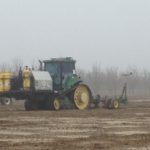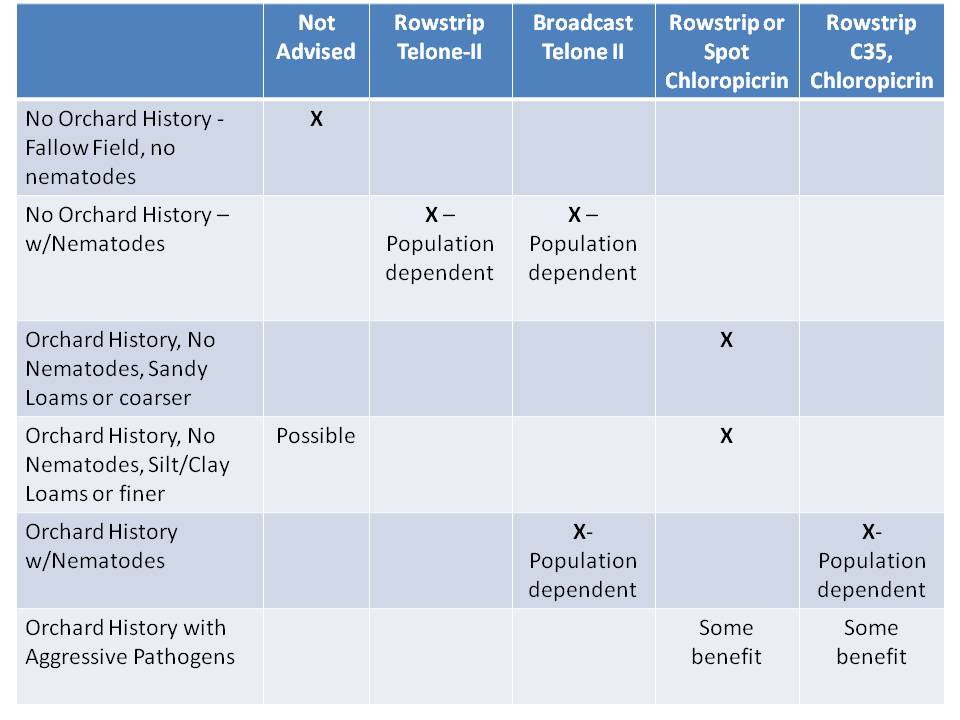It is the time of the year when many operations begin the process of replanting almond orchards. Orchard removal and eventual replacement is one of the more critical times of farm operations. The decision to remove a block varies by farmer. Some remove blocks based on a cycle of redevelopment, meaning that blocks are removed on a schedule based on age to assist with cash-flow. Some are removed due to expensive or inadequate resources (e.g. water). Many are removed when production drops below a certain profitability level.

Removing a block on profitability can be tricky. Blocks tend to alternate bear. An off year may trigger removal, but it could be coming into an on year. Prices also fluctuate. Therefore, this may not be the best way to decide on removing a block. Another consideration should be determining the the stand of trees remaining in the orchard and the rate of tree loss over the past few years. Commonly, in old orchards, trees are lost to heart rot decay fungi and corresponding wind throw. These losses tend to increase as the orchard ages. If this rate is increasing and the orchard stand is below 75%, removal and replanting should be considered. This is a conservative estimate, and should be evaluated with production records and tree stand for your own operations (This estimate is based on an 80% canopy coverage at maturity with minimal tree losses).
Once the decision to remove is made, the work begins. Consider harvesting the later varieties earlier to allow more time in the process. Nematode sampling should occur prior to removal to determine which species are present and assist in rootstock selection. This can be done one to two years prior to removal. Line up the resources for orchard removal, which can be done by tub grinders, whole orchard incorporation, or removal for firewood. Once removed, the field should be ripped to the depth of 24″ or greater several times to assist in root removal and reducing compaction. The field should be disced and spring-toothed to assist in root removal and leveling. After settling, the ground can be leveled and berms can be pulled. Fumigation should be considered, especially for sandy loam to sand soils to manage Prunus Replant Disease and plant parasitic nematodes. If fumigating, most of the land prep should be done prior to fumigation; moving soil around after fumigation defeats the purpose of fumigating. The field should be prepped and ideally the irrigation system is installed or ready to be installed immediately after planting. Bare root trees should be planted as soon as possible. Potted trees have more flexibility in planting timing.
Fumigation should be considered in areas with high population of plant parasitic nematodes (Ring, Lesion, or Rootknot) or a history of Prunus species (peach, plum, almond, cherry, etc). A matrix to assist with the decision is provided in the table below. Although not a true replant scenario, almonds following grapes often struggle with high counts of Ring and Rootknot nematode and fumigation with Telone-II should be considered if populations are high. In other soil types, replanting Prunus species after other Prunus species creates not only nematode problems, but also issues with Prunus Replant Disease. In these situations, a nematode analysis can help determine if chloropicrin or C35 (mixture of chloropicrin and Telone-II) or Telone-II should be used.
Removing and replanting almond orchards in a short timeline can be challenging. If this process is not done correctly, the orchard will not perform as well. If time and resources are limited, consider extending the timeline of the removal process. This could include late plantings with potted trees or replanting with another crop or cover crop. Planting another crop for a year or two can help reduce the pathogen and nematode populations within the soil, depending on crop. Growing another crop for two years or longer will reduce the affects of Prunus Replant Disease. Remember, it is more important to perform the replanting process correctly as the mistakes and shortcuts made will have to be lived with for 20 years.



08.31.16 | Pat Carson Insurance | Texas Crop Insurance
August 31, 2016[…] Considerations for Replanting Almond Orchards […]
David Butler
June 4, 2020This isn’t California, however, I’m wondering if almonds will grow well in south Texas? With 50 acres, this retired school teacher might like to try something else (new). Any ideas?
David Doll
June 19, 2020Almonds can be grown in other areas of the US, including Texas. This is especially true if you are looking to grow a few trees for local production or use. Growing much more than this will require some level of processing, which will add to the upfront capital costs. With that much land, it might be best to purchase a few trees from a nursery and see how the perform. It will also give you a few years to learn how to manage the trees.
David
Kevin Locke
December 8, 2020Pull out 60 year old walnuts (Waterlou). Rotating oats and corn for two years. Anything I should do differently when fallowing walnuts?
David Doll
December 22, 2020Kevin,
I am unsure of the question – but if almonds after walnuts – a good field clean-up will provide value. Pull a nematode test to determine if presence/absence of the nematodes of concern. Select the rootstock to mitigate the effects of the nematodes present. Replant Disease issues aren’t a concern.
If wanting to plant walnuts after walnut – time off is the best. The primary concern is lesion nematode, which can persist on rotting roots for multiple years. Remove as many roots as possible and thoroughly clean the field. Most of these roots are beyond the reach of fumigation, which limit the effectiveness of these treatments. So a deep cleaning is worth the cost. I would still consider stripping in Telone-II as deep as possible. I would also recommend planting on VX211 rootstock to manage the lesion nematode issue. If you struggled with Phytophthora in the old orchard, RX1 may be a better consideration.
David